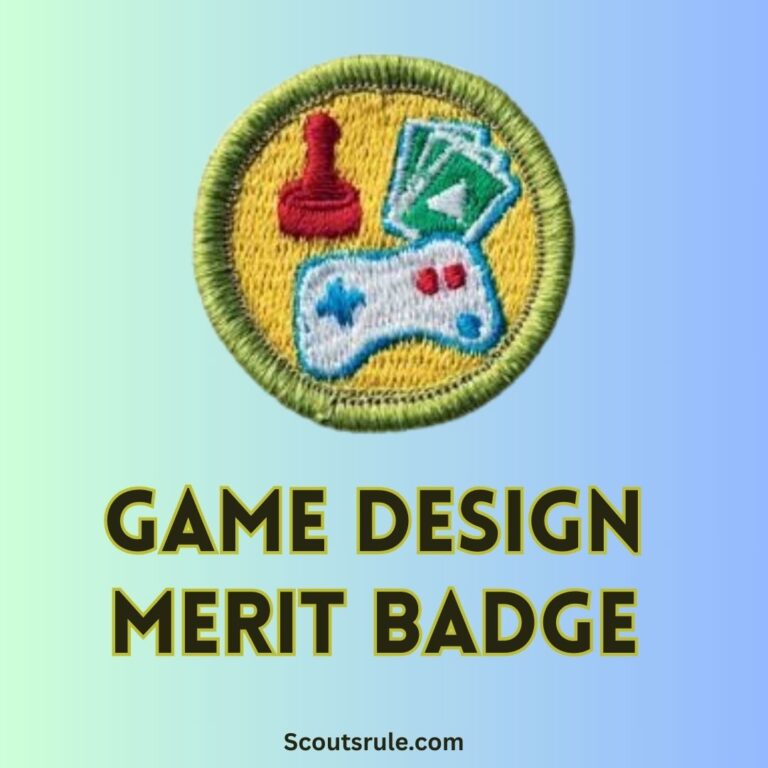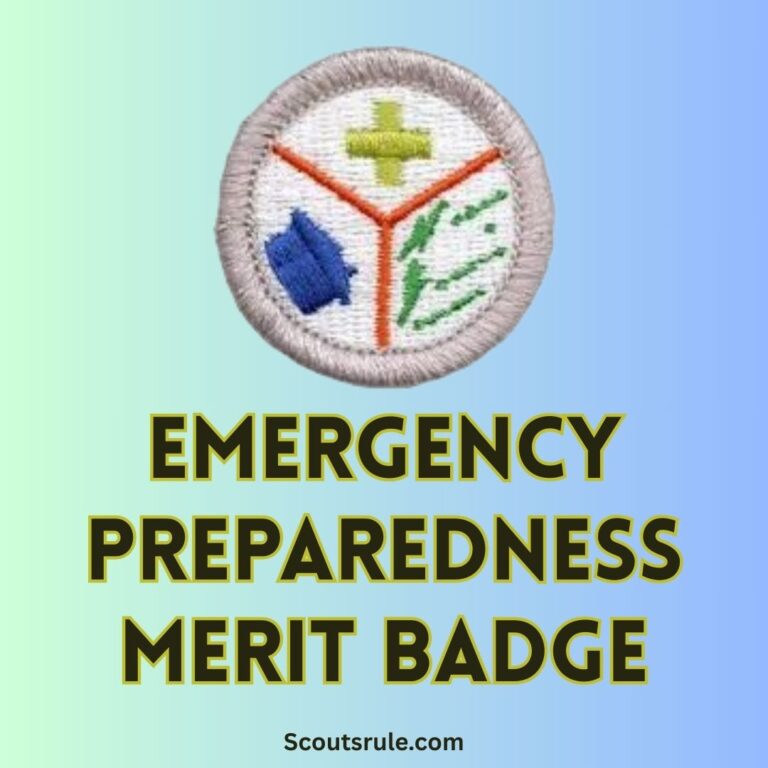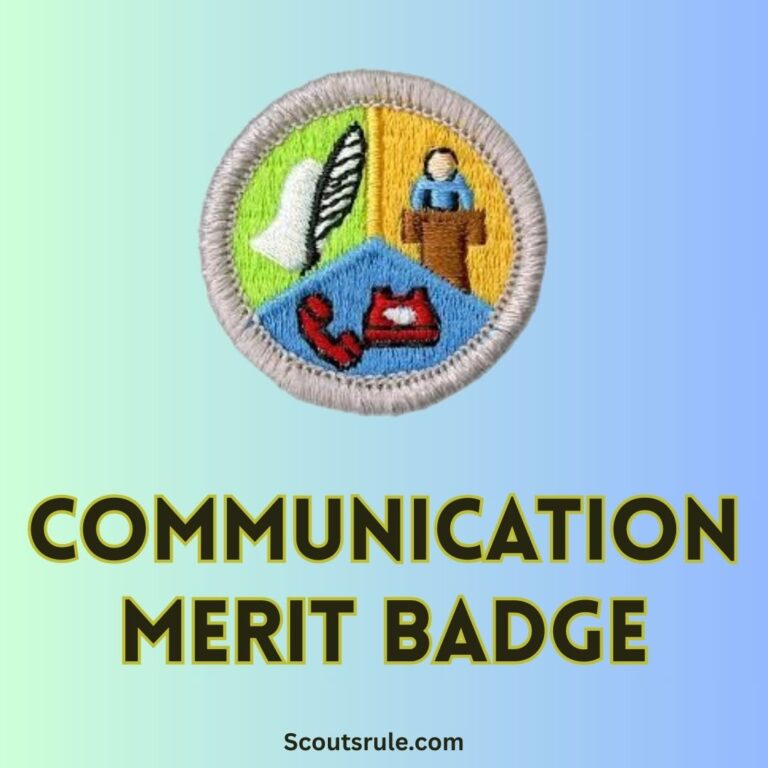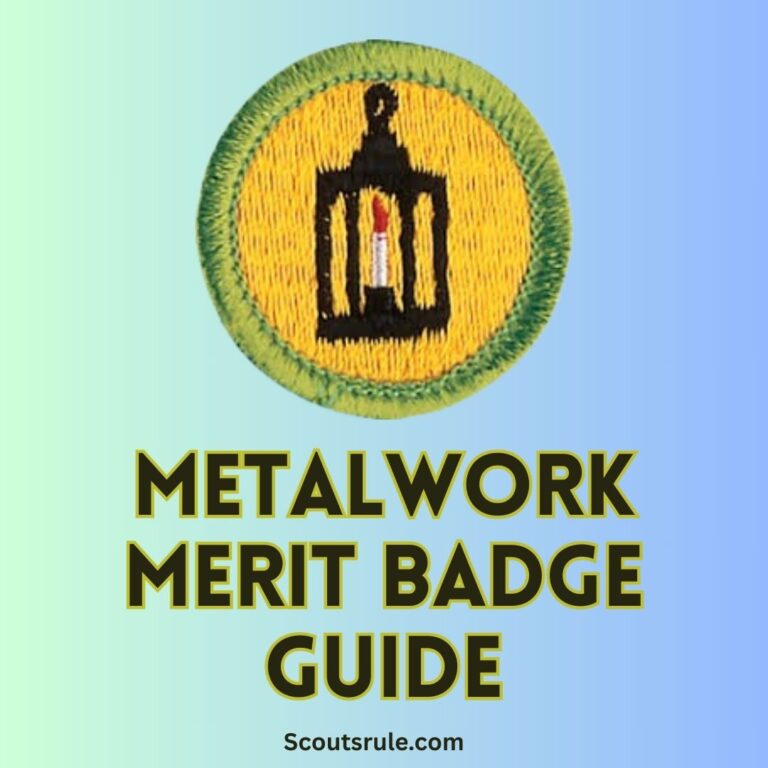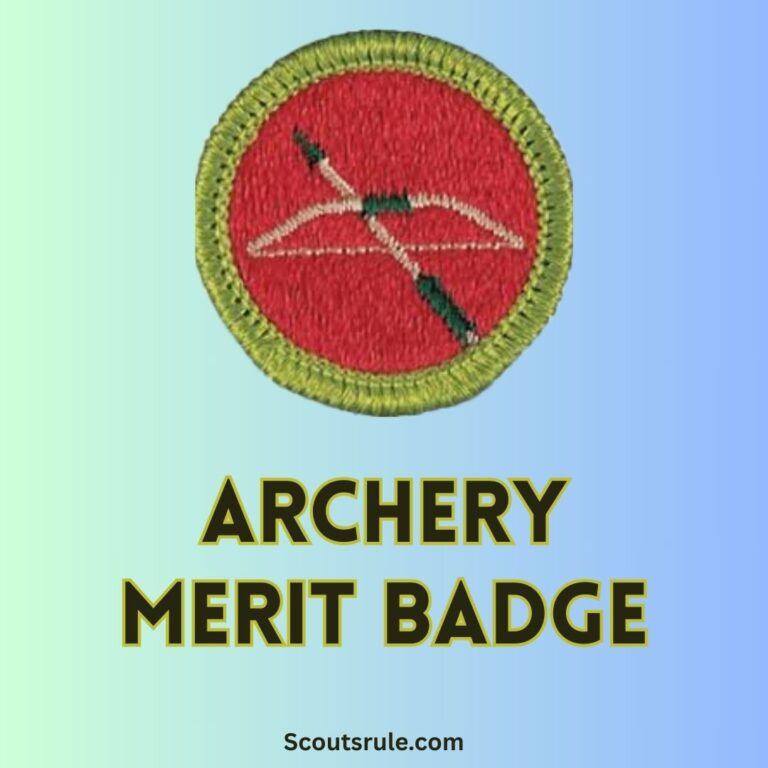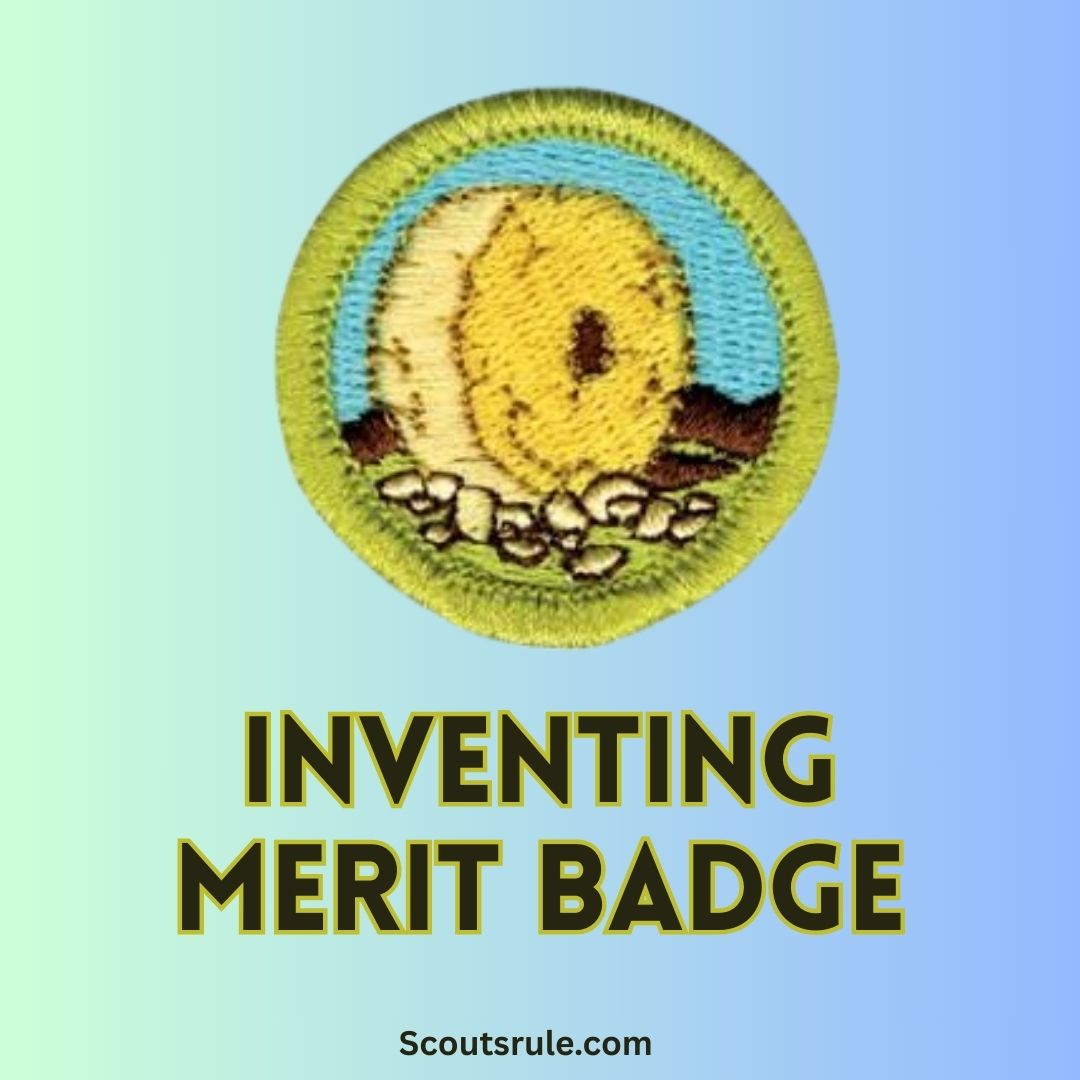
This guide is intended to help Scouts explore the process of inventing—from defining what it means to invent and understanding the impact of inventions on society to researching intellectual property and developing your own inventive idea. Whether you want to spark your creative problem‐solving abilities, learn how inventions drive economic development, or even explore future career possibilities in innovation and technology, this guide will walk you through each requirement while offering practical tips, project ideas, and insightful discussions.
Post Contents
- Introduction: The Art and Science of Inventing
- 2. Overview of the Inventing Merit Badge
- 3. Requirement 1 – Inventions: Defining and Contextualizing Inventing
- 4. Requirement 2 – Inventors: Learning from the Pioneers
- 5. Requirement 3 – Intellectual Property: Protecting Ideas
- 6. Requirement 4 – Sharing Inventions: What and Why to Share
- 7. Requirement 5 – Improving a Product: Analyzing and Enhancing Existing Ideas
- 8. Requirement 6 – Invent: Designing Your Own Invention
- 9. Documenting Your Process: Journals and Sketches
- 10. Exploring Careers in Inventing and Innovation
- Conclusion: Embracing a Lifelong Journey of Innovation
Introduction: The Art and Science of Inventing
Inventing is both an art and a science—a creative process that involves identifying problems, generating solutions, and using reasoning and experimentation to transform ideas into innovations that improve lives. Throughout history, inventors have reshaped society by addressing challenges in everyday life, driving economic development, and continually pushing the boundaries of what is possible. Whether you’re interested in creating a better way to organize your backpack or envisioning a groundbreaking device, the Inventing Merit Badge encourages you to explore your creative potential and develop essential skills such as critical thinking, problem solving, and effective communication.
By earning this merit badge, you have the opportunity to learn not only about historical inventions and renowned inventors but also about the practical steps involved in taking an idea from concept to prototype. In doing so, you begin to understand that inventing is more than just coming up with a novel idea—it’s about refining, testing, and sometimes even sharing that idea with the world.
2. Overview of the Inventing Merit Badge
The Inventing Merit Badge is designed to help Scouts:
- Define and understand the concept of inventing. You’ll articulate what it means to invent, exploring both the creative and mechanical aspects of the process.
- Explore the role of inventors in shaping society. This includes learning about how inventions drive economic development and improve human lives on a global scale.
- Research key inventions and inventors. You will study at least three significant inventions that have helped humankind, as well as learn about notable inventors whose work has had a lasting impact.
- Understand intellectual property issues. A crucial step is to learn about patents and other forms of intellectual property protection—knowing why and how ideas are legally safeguarded.
- Discuss sharing inventions. This requirement encourages you to consider which inventions are best shared with others and why, including the potential of unpatented inventions.
- Improve existing products. You will analyze a commercially available product used on an outdoor trip and suggest improvements, presenting your ideas in sketches and written explanations.
- Invent your own solution. Finally, you will conceive of an invention that solves a problem in your community or organization, gather user feedback, describe your invention in detail, and even build a model prototype.
This badge combines research, creative thinking, hands-on projects, and personal reflection to inspire you not only to invent but to understand the entire ecosystem surrounding innovation—from the development process to the legal protections that ensure inventors’ rights.
3. Requirement 1 – Inventions: Defining and Contextualizing Inventing
The first requirement asks you to define inventing in your own words and discuss the role of inventors and their inventions in the economic development of the United States. Here’s how to approach this requirement:
A. Defining Inventing
Inventing is the process of creating something new that solves a problem or enhances everyday life. It involves ideation, experimentation, and the application of technology or innovation to bring an idea to reality. For example, inventing can be anything from devising a simple tool that makes household chores easier to designing complex systems that revolutionize entire industries.
B. The Impact of Inventions on Economic Development
Discuss the importance of inventions in driving economic progress. You might include points such as:
- Job Creation: Inventors and their inventions can lead to the development of new industries and job opportunities. For instance, innovations in computing have given rise to the entire technology sector.
- Increased Efficiency: Inventions improve the efficiency of production processes, lower costs, and increase product quality, which in turn bolster domestic and global economic growth.
- Improving Quality of Life: From medical devices that save lives to transportation methods that connect communities, inventions enhance everyday life and contribute to social and economic development.
C. Listing Three Inventions and Their Impact
Select three inventions that you believe have had a profound impact on humankind. For instance:
- The Light Bulb: Explain how the invention of the light bulb revolutionized human living conditions by extending productive hours beyond daylight, improving safety, and enabling modern business practices.
- The Telephone: Detail how the telephone transformed communication, shrinking distances and enabling rapid business transactions, as well as deepening personal connections worldwide.
- The Internet: Although more recent, the internet has reshaped every aspect of human interaction, from commerce and education to social relationships, leading to a global economy interconnected by digital data.
Discuss with your counselor how these inventions exemplify both the creative process of inventing and its broad, positive impact on society.
4. Requirement 2 – Inventors: Learning from the Pioneers
This requirement explores the personal stories of inventors—either through direct interviews or comprehensive research. You have two pathways:
Option A: Interview an Inventor
- Identify a Local Inventor: With parental permission and your counselor’s approval, identify someone in your community who has invented something useful. Prepare a list of questions about their creative process, challenges faced, and how their invention has affected everyday life.
- Conduct the Interview: During the interview, ask questions such as:
- What inspired you to create your invention?
- How did you overcome obstacles during the development process?
- What advice would you give a young person interested in inventing?
- Report Your Findings: Summarize what you learned from the inventor, reflecting on how their experiences can influence your approach to inventing.
Option B: Research Inventors
- Study the Lives of Three Inventors: Choose three inventors—these might include historical figures like Thomas Edison, Alexander Graham Bell, or modern innovators like Steve Jobs. Research their biographies, the problems they solved, and the challenges they encountered.
- Select One Inventor to Highlight: Explain to your counselor why the inventor you selected is your favorite. Detail the specific qualities of the inventor’s work, the impact of their inventions, and the lessons you can learn from their creative journeys.
Documenting these interviews or research findings deepens your understanding of the inventing process and provides real-world examples of how perseverance, creativity, and determination lead to groundbreaking achievements.
5. Requirement 3 – Intellectual Property: Protecting Ideas
Inventions form the backbone of progress, but protecting an intellectual property (IP) is essential to ensuring that inventors receive credit and compensation for their work. This requirement asks you to:
A. Define Intellectual Property
- Definition: Intellectual property refers to creations of the mind, such as inventions, literary and artistic works, designs, symbols, names, and images used in commerce. It serves to protect the original work of inventors and creative professionals.
- Why It’s Important: Explain that IP protection encourages innovation by ensuring that inventors can benefit from their creativity. Without IP rights, there is little incentive to invest time and resources into developing new products or solutions.
B. Government Agencies and Types of Intellectual Property
- Government Oversight: Identify the government agencies responsible for IP protection (for example, the United States Patent and Trademark Office, or USPTO). Describe how these agencies function to register, protect, and regulate intellectual property rights.
- Types of Intellectual Property: Outline the types of intellectual property that can be protected, such as patents, trademarks, copyrights, and trade secrets. Explain how each type serves a different purpose.
C. The Components of a Patent
- Patent Components: Explain that a patent is a legal document that protects an invention and typically includes:
- Claims: The specific aspects of the invention that are legally protected.
- Drawings and Descriptions: Detailed illustrations and written descriptions of how the invention works and how it is constructed.
- Different Types of Patents: Describe the differences between utility patents (for functional inventions), design patents (for ornamental designs), and plant patents (for new plant varieties).
D. Patent Infringement
- Define Patent Infringement: Explain that patent infringement occurs when someone makes, uses, or sells a patented invention without permission from the patent holder.
- Discuss Its Impact: Highlight how, without proper protection, inventors could lose both recognition and the financial benefits of their work, potentially discouraging further innovation.
You may also explore a hands-on component by examining a patent on a piece of Scouting gear. With parental permission, use online resources to look up the patent details and compare the product with the claims documented in the patent.
Not all inventions are kept secret; many are shared openly with the public to encourage further innovation and societal benefit. This requirement asks you to:
- Discuss Appropriate Inventions for Sharing: Talk with your counselor about which types of inventions are best shared with others and why. Consider how inventions that solve widespread problems or improve the quality of life should be accessible to benefit society.
- Highlight an Unpatented Invention: Identify one unpatented invention and explain its impact on society. This could be a simple household tool or an innovative social technique that has grown without formal patent protection.
- Explain the Pros and Cons: Consider the balance between keeping an invention proprietary (to earn financial rewards) versus sharing it for the collective good. Reflect on how inventions can inspire further innovation when shared openly.
Through these discussions, you will understand that sharing ideas can lead to collaborative improvements and that inventors must carefully consider both the benefits and risks of disclosure.
7. Requirement 5 – Improving a Product: Analyzing and Enhancing Existing Ideas
Another aspect of inventing is examining products already in the market and finding ways to improve them. For this requirement, you must:
- Choose a Product: Select a commercially available product that you have used during an overnight camping trip with your troop or another experience. This could be anything from a camping stove to a multi-tool.
- Analyze the Product: Evaluate the product’s design, function, and performance. Identify any areas where the product could be improved—perhaps in terms of efficiency, ease of use, durability, or environmental impact.
- Make Recommendations: Write a detailed report with your improvement suggestions. Create sketches that clearly show what changes you would make. Your sketches should include modern design techniques and annotate parts that have been improved.
- Discuss with Your Counselor: Present your analysis and sketches, explaining the rationale behind each recommendation. Focus on how your proposed modifications could enhance the product’s usability and functionality.
This requirement teaches you that innovation often begins with incremental improvements and that even well-established products can be reimagined with fresh perspectives.
8. Requirement 6 – Invent: Designing Your Own Invention
Perhaps the most creative and challenging part of the merit badge is the opportunity to invent your own solution to a real-world problem. This requirement involves several steps:
A. Conceive an Invention Idea
- Identify a Problem: Look around your life—your family, troop, school, or community—and identify a problem or inconvenience that you believe could be solved with a new invention. Consider issues that range from practical daily challenges to larger, systemic inefficiencies.
- Brainstorm Solutions: Gather ideas and discuss potential solutions with friends, family, or mentors. Record your thoughts in a dedicated notebook. Try using mind maps or diagrams to visualize the problem and possible approaches.
B. Gather Input from Potential Users
- Engage with the Community: Talk to potential users of your invention about their needs and challenges. Ask questions such as:
- What problems do you frequently encounter?
- What features would you like in an ideal solution?
- Record Their Feedback: Use this input to refine your concept and ensure it addresses real needs rather than just a theoretical problem.
C. Write a Detailed Description and Sketch
- Describe the Invention: Write a clear, detailed statement that outlines what your invention is and how it works. Explain the problem it solves and the benefits it offers.
- Include Detailed Sketches: Produce one or more sketches that illustrate your invention from various angles. Label the parts and highlight any innovative features. These sketches will serve as the blueprint for your idea.
D. Create a Model or Prototype
- Build a Model: Using readily available materials such as clay, cardboard, or building blocks, create a model of your invention. This does not need to be a functioning prototype, but it should give a tangible representation of your idea.
- List Required Materials: Create a list of materials and tools needed to build a fully functioning version of your invention. Include any specialized components or technologies that might be required.
- Reflect on the Process: Keep a diary of your progress, any design changes made during prototype development, and the challenges you encountered. This reflection will be crucial when you discuss your project with your counselor.
By the end of Requirement 6, you will have demonstrated your ability to move from a conceptual idea to a tangible model—a process that reflects the true spirit of inventive problem solving.
9. Documenting Your Process: Journals and Sketches
Throughout the Inventing Merit Badge process, maintaining detailed documentation is crucial. Here are some best practices:
- Keep an Inventor’s Notebook: Record all brainstorming sessions, interviews, research findings, and discussions with mentors. Include sketches, notes on brainstorming sessions, and iterations of your invention.
- Photograph Your Progress: Take pictures of your setup, your brainstorming processes, the interview with any local inventor, and your prototype stages.
- Review and Reflect: Use your notebook as a resource when compiling your final report for the merit badge. Reflections on what worked, what could have been improved, and how your understanding evolved are key to demonstrating comprehensive learning.
10. Exploring Careers in Inventing and Innovation
The final piece of the Inventing Merit Badge explores potential career paths that might interest you. Options include:
- Product Designer or Engineer: Professionals in this field take innovative ideas and develop them into marketable products. They often work in technology companies, industrial design firms, or both.
- Research and Development (R&D) Specialist: R&D specialists focus on creating and improving technologies. They work in fields ranging from consumer electronics to sustainable energy.
- Inventor/Entrepreneur: Some inventors choose to commercialize their ideas, either independently or by starting their own companies. This path requires business acumen, perseverance, and the ability to navigate patent and intellectual property challenges.
- Innovation Consultant: These professionals work with organizations to streamline their creative processes and implement innovative solutions for operational challenges.
Explore the educational and professional pathways required for these careers. If possible, arrange an interview or shadow a professional in one of these roles. In your final report, summarize what you learned, highlighting your interests and how the skills you’ve developed through the merit badge might translate into a practical career.
Conclusion: Embracing a Lifelong Journey of Innovation
The Inventing Merit Badge is more than a checklist of requirements—it is an invitation to explore one of the most dynamic and valuable aspects of human creativity. By defining what it means to invent, exploring the historical and economic impact of innovation, researching intellectual property, and ultimately developing your own invention, you engage with a process that fosters critical thinking, resilience, and imagination.
The skills learned during this badge—such as the ability to research thoroughly, interview effectively, and document your creative process—are not only applicable in the realm of inventing but are also transferrable to every area of life, from academics to future careers in science, technology, engineering, and beyond.
As you progress through your tasks, embrace the iterative nature of inventing. Expect that your first ideas might need refinement and that challenges are opportunities to learn. Keep your notes detailed, your sketches clear, and your mind open to feedback. Remember, every invention—big or small—starts with a single idea, nurtured by curiosity and driven by the desire to make life better.
May your journey in the Inventing Merit Badge spark a message of creativity and perseverance in you. Whether you become a noted inventor someday or simply use your skills to innovate in everyday life, the process of inventing teaches you that solutions often lie just beyond the barriers of traditional thinking. Let your inventive spirit soar, and turn challenges into opportunities.
Happy inventing, and may your creativity lead the way to innovations that make the world a better place!

Hi, Robin here, A former lead Scout and here I share my inspiring stories about USA Scouts, leadership, adventure, how to guides and more.

